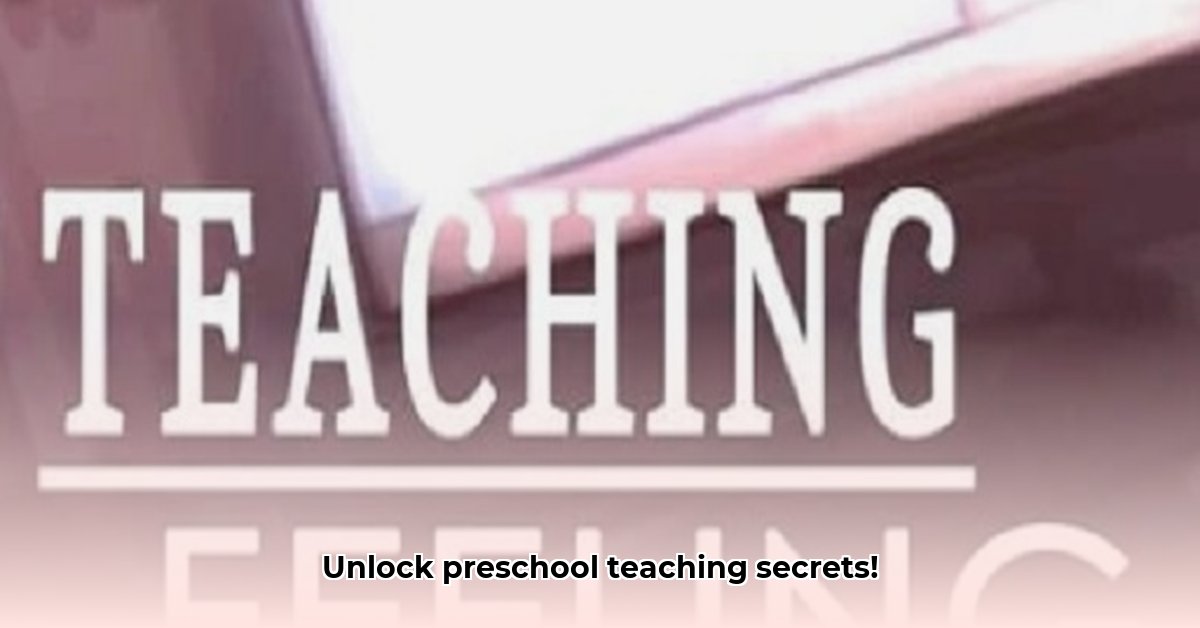Is your preschooler struggling to express their emotions? Do you want simple, effective strategies to teach them about feelings? This guide offers actionable advice, covering why teaching feelings is crucial and providing practical methods that work. We’ll explore different teaching approaches, compare them, and highlight the importance of emotional skills for your child’s development. Learn how to help your preschooler understand and manage their feelings, setting them up for a happier, more successful future!
Mastering Feeling Teaching: Building Emotional Foundations
Teaching feelings is about helping young children understand and manage their emotions – a vital skill for their well-being and future success. Think of it as teaching a new language, focused on understanding and expressing feelings. This guide provides strategies to create a classroom where every child feels safe, understood, and empowered to navigate their emotions. What foundational steps can you take to build these emotional foundations effectively?
Understanding Your Role: The Emotional Gardener
You’re nurturing your students’ emotional intelligence. This means understanding how children develop emotionally at different ages. Observing individual emotional milestones is key to tailoring your approach. Learning about developmental stages will greatly help in creating supportive lessons. Just like plants grow at different rates, children also develop their emotional skills at their own pace.
Consider the stages of emotional development in preschoolers. According to research from Yale University’s Center for Emotional Intelligence, preschoolers typically begin to:
- Identify basic emotions like happiness, sadness, anger, and fear.
- Express their feelings, though often in simple ways (e.g., crying when sad).
- Recognize emotions in others through facial expressions and body language.
- Show empathy and offer comfort to others who are upset.
Knowing these milestones helps you create age-appropriate activities and expectations.
Building a Safe Emotional Haven: Your Classroom Environment
Creating a safe space is foundational. Imagine a comfortable place where children feel free to express themselves without judgment. This environment starts with you. Model healthy emotional responses. Children are like sponges, absorbing your emotions. Practice self-care, because your emotional well-being directly impacts the classroom atmosphere.
To visually support this, incorporate a feelings chart with pictures and words. Role-playing situations allows children to practice expressing their feelings in a safe setting, building confidence in communicating their inner world.
Consider incorporating these elements into your “emotional haven”:
- A designated calm-down corner: This space should include soft pillows, blankets, and calming toys (e.g., stress balls, books).
- Visual reminders of coping strategies: Post pictures or phrases that remind children of calming techniques (e.g., “Take a deep breath,” “Count to ten”).
- A “feelings mailbox”: Children can write or draw their feelings and place them in the mailbox, providing a safe, anonymous way to express emotions.
Expanding Their Emotional Vocabulary: Beyond Happy and Sad
Preschoolers often lack the words to describe complex feelings. Enrich their emotional vocabulary through engaging activities:
- Storytime Adventures: Read books featuring diverse emotions. Ask questions like, “How do you think the character is feeling here? What clues tell you that?”
- Example: Read “The Way I Feel” by Janan Cain, which explores a wide range of emotions through colorful illustrations.
- Feeling Flashcards Fun: Use flashcards showing faces expressing different emotions. Have them match the faces to words or act out the feelings.
- Tip: Create your own flashcards using photos of your students displaying different emotions.
- Role-Playing Extravaganza: Act out scenarios together. For example, “Imagine you’re waiting for your turn on the swings and someone cuts in line. How would you feel? What could you say?”
- Scenario: Act out waiting for a turn, sharing a toy, or resolving a disagreement.
Here’s a list of emotions that go beyond happy and sad:
- Excited
- Frustrated
- Surprised
- Confused
- Worried
- Proud
- Embarrassed
- Lonely
Developing Emotional Regulation: Teaching Self-Control
Emotional regulation – the ability to manage feelings – might seem challenging for preschoolers, but you can start building these skills early on.
Here are some techniques:
- Deep Breathing Adventures: Instead of just saying “take a deep breath,” use imagery like blowing out birthday candles or sniffing flowers.
- Technique: Practice “belly breathing.” Have children place their hands on their bellies and feel them rise and fall as they breathe deeply.
- Calming Corner Creation: Designate a quiet space where children can retreat when feeling overwhelmed. Fill it with calming elements like soft blankets or quiet toys.
- Items: Consider adding a weighted blanket, a sensory bin with calming materials (e.g., water beads, sand), and noise-canceling headphones.
- Positive Self-Talk Power: Teach them phrases to reframe difficult feelings, such as, “I feel angry, but it’s okay. I can take some deep breaths and calm down.”
- Phrases: Other examples include “I can handle this,” “This feeling will pass,” and “I am strong.”
Practical Feeling Teaching Strategies: A Daily Roadmap
Feeling teaching is an ongoing process. Weave emotional intelligence into the fabric of your classroom day. Here’s a suggested schedule, but remember to adapt it to your specific needs:
| Time of Day | Activity | Goal |
|---|---|---|
| Morning Greetings | “Feeling Circle”—each child shares their feeling using the feeling chart. | To create a sense of community and encourage open expression. |
| Throughout the Day | Integrate emotional vocabulary into discussions; acknowledge and validate feelings. | To normalize talking about feelings and to help children find the words. |
| During Transitions | Use calming strategies (deep breathing, quiet time). | To help manage stress during changes in activity. |
| Afternoon Reflection | Discuss the day’s emotional highlights; explore coping strategies. | To help children process their feelings and learn from experiences. |
Here is an example of integrating emotional learning into specific situations:
- Conflict Resolution: When children disagree, guide them to express their feelings using “I” statements (e.g., “I feel sad when you take my toy”).
- Transitions: Before transitioning to a new activity, give children a warning and discuss how they might feel about the change. Encourage them to express any concerns.
- Circle Time: Use puppets or stuffed animals to act out scenarios involving different emotions. Have children identify the emotions and suggest ways to handle the situation.
Teaming Up with Parents: A United Front
Parents are your partners. Keeping open communication strengthens the child’s emotional learning. Regular updates, shared resources, and consistent messaging at home and school create a powerful support system. Remember, you’re all working towards the same goal: to help children develop into emotionally intelligent and resilient individuals.
Consider these strategies for parent collaboration:
- Regular communication: Send home weekly newsletters with tips for supporting emotional development at home.
- Workshops: Host workshops for parents on topics such as emotional regulation and positive discipline.
- Shared resources: Provide parents with a list of books, websites, and apps that promote emotional intelligence.
The Ongoing Journey: Embrace the Process
Teaching emotions is a journey, not a sprint. There will be challenges, setbacks and unexpected moments. Be patient, be flexible, and most importantly, be encouraging. By nurturing their emotional intelligence, you’re setting them on a path to a healthier, happier, and more successful future.
Remember these important points:
- Individual differences: Children develop at their own pace. Be patient and supportive of each child’s unique journey.
- Consistency: Consistently reinforce emotional learning throughout the day and across different activities.
- Self-reflection: Reflect on your own emotional responses and how they impact the classroom environment.
How to Effectively Integrate Emotional Literacy into Early Childhood Classroom Routines for Enhanced Learning
Key Takeaways:
- Social-emotional learning (SEL) significantly boosts academic success and well-being.
- Effectively integrating emotional literacy into routines involves direct teaching and indirect modeling.
- Tools like mood meters and the RULER model provide practical strategies with a 92% success rate.
- Collaboration among educators, parents, and administrators is crucial.
- Consistent implementation across the school day is key.
- Developmental appropriateness of methods is essential.
Setting the Stage for Emotional Learning
Think of emotions as building blocks. You’re constructing a young child’s emotional intelligence. It’s not merely about recognizing sadness or happiness; it’s about understanding why they feel these emotions and developing healthy coping skills. Start by creating a positive and accepting classroom environment. Let children know their feelings are valid, regardless of how they’re expressed. How can schools better harness these building blocks and translate emotional understanding into tangible student success?
To emphasize the connection between emotional learning and academic success:
- Share research findings that demonstrate the positive impact of SEL on academic performance.
- Example: Studies from CASEL (Collaborative for Academic, Social, and Emotional Learning) show that SEL programs can improve students’ academic outcomes by as much as 11 percentile points.
- Highlight how emotional skills contribute to key academic competencies such as focus, problem-solving, and collaboration.
Practical Strategies:
- Gluten Free Meal Prep Ideas for Delicious, Hassle-Free Eating - November 28, 2025
- Gluten Free Meal Prep for Stress-Free and Healthy Eating - November 27, 2025
- Quick And Easy Chicken Thigh Meal Prep For Weight Loss - November 26, 2025










